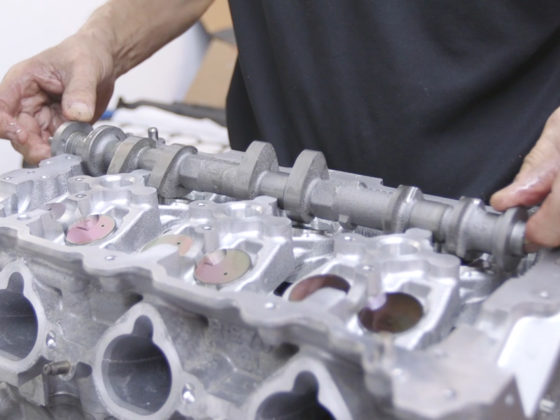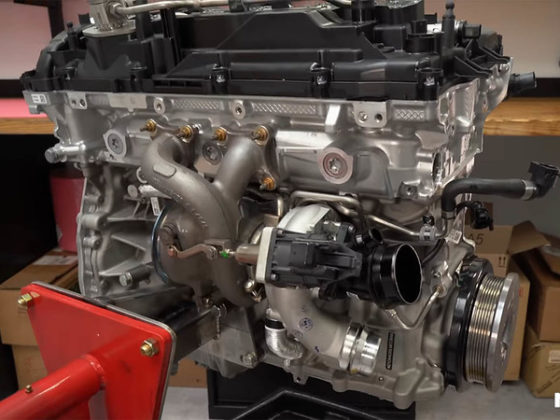
It’s not every day that you get to join a gang. No, really, I mean, they usually have rituals and rites of passage or you have to commit heinous acts of violence or whatever. But, at least for me, it was just as easy as picking up the phone and calling Nine Lives Racing.
The SC300 is not un-aerodanymic. It is a sports coupe from that early 90s era when the Japanese were still designing sleek and sexy shapes. But once you add power and speed, any deficiencies become exacerbated. Granted, the tires were ancient at the time, but I had a very hairy moment locking up the rear wheels coming into turn 10A at Road Atlanta and thought that perhaps some extra downforce in the rear of the car couldn’t hurt.

Johnny has been around racing for quite some time, and I had inadvertently gotten introduced to him when I was trying to put together the personal safety equipment article. We had stayed in touch, since he’s local, and as I saw Johnny putting his little gang together I knew I wanted to be a member.

Robert has been an aerodynamicist, also for quite some time. Johnny and Rob met each other while working for Élan Motorsports on the NP01 prototype, where Robert was actually the project’s chief engineer.
During their time together, Rob and Johnny discovered an extruded aluminum airfoil that was made into a rear wing for the prototype racer. Johnny and Rob were both impressed with its strength, aerodynamic capabilities, and its relatively low cost. When stacked up against the carbon fiber alternatives out there, this American-made unit comes out on top.
I’m not sure if that’s a pun or not.
While Nine Lives Racing has a bunch of off-the-shelf applications for popular vehicles, they also are able to do custom design services for any vehicle, and so that’s what I worked on with them. It first starts with some dirty photos. Because dirty photos first, and then you can play with the wang.

Well, more appropriately, he’s getting the car dirty with speckled paint. Don’t worry, it’s water-soluble.




5 comments
Dang, I was hoping that the paint would be use for flow visualization. Flow viz paint, and wool tufts are both cheap and effective methods to develop chassis aerodynamics.
You can’t really know what the flow is like at the back end of a vehicle without real-world testing. For example, the optimum solution for the SC300 may not be a wing, at all…but rather, a trunk lid spoiler. You can gain both downforce anb reduce drag if you design a proper spoiler. The curved surface of the SC300 rear trunk lid probably increases lift, rather than making downforce. So, there’s a huge missed opportunity by installing a rear wing only.
Personally, I would like to see more testing, and real-world verifcation before I were to commision the fabrication of a solution like a custom rear wing.
Please note, that some of the most expensive super cars currenly being produced no longer include rear wings. This is because a wing is not the optimal method to produce downforce. A diffuser/spoiler is currently en vogue because it produces downforce with very small drag penalties. A proper race car optimizes the negative lift/drag coefficient.
One should always explore as many solutions as possible before committing to one particluar solution.
I don’t want to be a complete Debbie Downer, but I would highly recommend that you use some flow viz, and install a lip spoiler on the trunk lid. (The flow viz can be used before/after to verify the solution.) A rear lid spoiler will make the rear wing and rear diffuser more efficient. Whenever you can get a two for one, that’s when you know that you are heading down the right path.
A properly designed and placed wing is the lowest drag to downforce device.
Aye, a wing is definitely the most efficient item by itself. But you can get quite significant interaction by changing the pressure distribution on a large area of the car, which is how you get crazy high lift/drag ratios like were seen in Group C racing, even with the primitive state of CFD at the time (pretty much 100% wind tunnel testing to develop those cars).
An SC300 would probably see quite a benefit by putting a small lip spoiler on the end of the trunk lid. This will encourage clean separation of flow at the rear end of the car (look at modern cars now, they all have sharp features at the very back for this reason), and at a moderate ~15-30 deg angle and ~1.5-2″ of height, it will tend to reduce total drag and add a small bit of rear downforce. We’re not talking huge downforce here, but it reduces drag at the same time, so it comes at no aero penalty.
Was some type of photogrammatry used (stitched 2d photos from normal camera), or was a true 3d capture camera used?
@cmj re-read page two:
“But there’s an end to this means, I assure you. And it’s not another innuendo. I don’t think. If you look back to the photo of Rob, he’s taking a photo. In fact, he’s taking dozens of photos. You see, when you take dozens of photos from different angles of the speckled car, you can then use some really fancy computering to stitch all of the photos together to build a really accurate 3D model of the vehicle.”
https://motoiq.com/project-sc300-road-racer-part-27-joining-a-wang-gang/2/
Rob is using a regular digital camera and then stitching 2D photos together using software to build the 3D model.